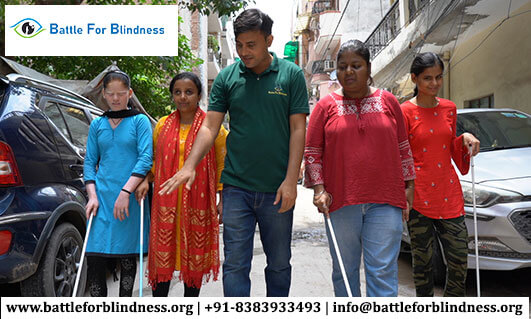
In an era of technological advancements and inclusive education, creating innovative solutions for deaf-blind learners is more essential than ever. With approximately 2% of the world’s population experiencing some degree of combined visual and hearing impairment, educators and caregivers are exploring groundbreaking methods to ensure access to education and communication for these individuals. Here’s a look at some innovative techniques that are shaping the future of deaf-blind learning.
Understanding the Challenges Faced by Deaf-Blind Individuals
Deaf-blind individuals experience unique challenges due to the dual loss of vision and hearing. These challenges often include:
- Difficulty accessing traditional educational materials.
- Limited opportunities for communication.
- Barriers in social integration and mobility.
To overcome these obstacles, educators are leveraging multisensory learning approaches, tactile communication systems, and assistive technologies to provide personalized educational experiences.
Key Innovations in Deaf-Blind Education
1. Tactile Sign Language
Tactile sign language is an adaptation of standard sign language designed for individuals who are both deaf and blind. Learners place their hands on the hands of a signer to feel the movements and gestures, enabling communication and comprehension. This technique fosters independence while allowing individuals to connect with their environment.
2. Braille and Refreshable Braille Displays
Braille remains a cornerstone of education for visually impaired individuals. Modern innovations like refreshable braille displays have taken this a step further by integrating dynamic content. These devices allow users to read digital text, such as emails or e-books, in braille, providing greater access to learning materials.
3. Assistive Technologies
Technologies like screen readers, hearing aids, and haptic devices are transforming how deaf-blind individuals learn. Haptic feedback tools provide vibrations to signify directions or actions, making mobility and learning more intuitive.
Trending keywords: assistive technology for the visually impaired, tactile learning for deaf-blind, inclusive education tools.
4. Object-Based Learning
For learners who benefit from tangible experiences, object-based learning integrates real-world objects into the curriculum. For example, touching a model of a plant while learning about photosynthesis provides a tactile connection to abstract concepts.
5. The Power of Touch Cues
Touch cues, or tactile signals, are brief touches on the body used to convey messages. For instance, a tap on the shoulder may indicate “pay attention,” while a squeeze on the arm might signal “good job.” These non-verbal communication tools enhance trust and understanding between educators and learners.
Trending keywords: tactile cues in education, hands-on learning techniques, communication methods for the deaf-blind.
The Role of Technology in Enhancing Accessibility
a. Wearable Devices
Wearable technology, like haptic gloves and smart glasses, is revolutionizing accessibility for deaf-blind individuals. These devices provide real-time translations of text or speech into tactile signals, enhancing independence in various settings.
b. Mobile Applications
Apps like Be My Eyes and Seeing AI are tailored to visually impaired users, offering real-time assistance via AI or volunteers. Expanding these apps with features for deaf-blind users is an exciting frontier in inclusive technology.
Empowering Educators: Training and Resources
For innovative methods to be effective, educators must be equipped with proper training and resources. Workshops on tactile communication, the use of assistive devices, and creating inclusive lesson plans are critical to empowering teachers. Online platforms and organizations like Perkins School for the Blind and Helen Keller National Center provide valuable training programs.
The Importance of Community and Support
Deaf-blind education thrives when communities, families, and professionals collaborate. Building support networks and advocacy groups raises awareness and ensures resources reach those in need.
Trending keywords: deaf-blind community support, inclusive teaching practices, family resources for the visually impaired.
Looking Ahead: The Future of Deaf-Blind Education
As technology continues to evolve, so do the possibilities for deaf-blind education. From AI-powered tools to sensory-integrated classrooms, the future holds promising opportunities for greater inclusion and success. By embracing innovation and fostering empathy, we can ensure every deaf-blind individual achieves their fullest potential.
Conclusion
Innovative methods like tactile sign language, assistive technologies, and object-based learning are breaking down barriers in deaf-blind education. Through collaboration, training, and cutting-edge solutions, we can create a world where deaf-blind individuals thrive academically and socially.
If you’re passionate about making a difference, consider supporting organizations dedicated to visually impaired education or volunteering in programs that empower the deaf-blind community. Together, we can turn the challenges of deaf-blindness into opportunities for learning and growth.





